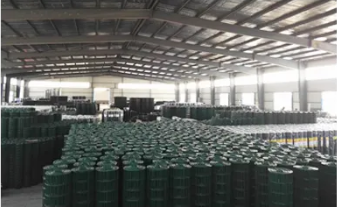The Symbolism and Significance of Barbed Wire
Barbed wire, a seemingly simple invention created in the 19th century, has come to symbolize a complex array of themes ranging from protection and privacy to confinement and oppression. Initially designed for agricultural purposes, barbed wire transformed the landscape of farming and ranching, defining property lines and managing livestock. This functional application marked a significant shift in land use, paving the way for the vast landscapes of America’s frontier.
The invention of barbed wire can be attributed to several innovators, with Joseph Glidden’s patent in 1874 being particularly pivotal. His design featured sharp barbs along a twisted wire, which effectively deterred animals from crossing boundaries. The widespread adoption of barbed wire revolutionized the cattle industry and allowed farmers to protect their crops from wandering livestock. However, the introduction of this practical tool was not without consequence; it also led to conflicts over land ownership and usage, particularly between settlers and Native American tribes.
As barbed wire proliferated across the American West, it became emblematic of the broader themes of control and territory. The physical barriers it created mirrored the socio-political dynamics of the time. The clashes between ranchers and farmers, as well as the tensions with Indigenous peoples, were often marked by the use of barbed wire as a tool of exclusion. This wire, once a benign means of animal husbandry, thus took on a more sinister connotation, representing division and the encroachment of settlers upon native lands.
barbed wire

Beyond the realms of agriculture and property disputes, barbed wire has also emerged as a potent symbol in contexts of war and imprisonment. Its use in military settings—barriers surrounding military bases or the infamous wire fences of prisoner-of-war camps—highlights its connotation of confinement. In these instances, barbed wire serves as a stark reminder of the fragility of freedom and the harsh realities of conflict. Images of barbed wire fences often evoke feelings of despair and hopelessness, encapsulating the experiences of those who find themselves on the wrong side of these barriers.
In contemporary society, the symbolism of barbed wire continues to evolve. It is often used to signify borders and immigration policies, acting as a physical representation of national divides. As debates around immigration intensify globally, barbed wire fences have become a haunting symbol of exclusion and division, invoked in discussions about human rights and the treatment of migrants. This usage raises critical questions about the morality of such barriers and challenges societies to reflect on values of inclusion versus exclusion.
Moreover, artists and activists have repurposed barbed wire in their work as a metaphor for resilience and resistance. In installations and performances, the imagery of barbed wire can convey themes of struggle against oppression, evoking a sense of defiance against barriers—both physical and ideological. This transformative use of barbed wire shows its potential to transcend its original purpose and serve as an instrument for social commentary.
In conclusion, while barbed wire began as a tool for agricultural efficiency, its evolution into a powerful symbol is indicative of its role in broader societal issues. It embodies themes of protection, division, oppression, and resistance, reflecting the complexities of human conflict and connection. As we continue to engage with the implications of barbed wire in various contexts, we are reminded of its multifaceted significance in shaping narratives about freedom, boundaries, and humanity itself.
















